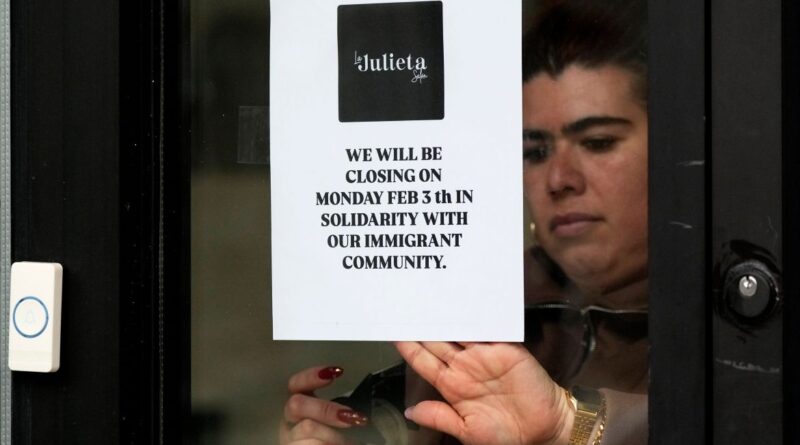Japanese Americans Voice Objections Over ICE Detention Centers
Recent activities surrounding an immigration facility in El Paso, Texas has provoked renewed objections from Japanese Americans due to its association with the aggressive immigration policies of the Trump era. The detention center, inaugurated in August 2025, occupies a former military base reputed for its internment of Japanese Americans during wartime. Lately, a significant number of Japanese Americans have rallied against the creation of such facilities, and the expressed resolve of the US Immigration and Customs Enforcement agency (ICE) to incarcerate mass amounts of people, as it revives the painful memories of their transactions during World War II.
The US authorities have further made use of the 1798 Alien and Enemies Act, a legislation historically employed in the same World War, to amplify ICE’s authority to detain civilians. The internment of Japanese Americans during the war was largely justified through this same act, which endorses the capture and expulsion of foreign ‘adversaries’. Dublin prison, positioned near San Francisco, was shuttered in 2024, but amidst the Trump administration’s aspirations of detaining an increased number of immigrants, ICE is looking to reopen the prison, along with multiple other detention centers.
A wave of protests from the Japanese American society emerged in July in reaction to Dublin’s potential reuse. They expressed apprehension that the recent actions by ICE echo the trajectory that resulted in the imprisonment of over 120,000 Japanese Americans from 1942 to 1946. An internal assessment by ICE indicates that at present, there are about 60,000 immigrants dispersed in various detention locations across the nation.
According to advocacy groups, Latino neighborhoods have been predominantly targeted, although such allegations have been refuted by the Department of Homeland Security, denying biases based on skin tone or ethnic origin. Among the protesting crowd, Lynn Yamashita expressed her dismay shared by many, “I’m part of this because the Japanese were interned, my father was interned, and it can’t happen again – but it is happening, it’s shameful.” Another protester, Douglas Yoshida, voiced, “There’s no invasion, but Trump has cited the Alien Enemies Act to detain and deport people without any due process.”
The Japanese American society in California was fast to parallel the perceived targetting of Latino communities by ICE and their own experiences during the World War II. This is especially significant due to its history of forcibly boarding Japanese American families onto buses heading to American internment camps back in 1942.
Historically, legislative actions passed before the World War II aimed to curb both Chinese and Japanese immigration into the US spurred significant racial prejudice against Asian immigrants. Asian customers were often denied service in companies dominated by white Americans, barred from using community facilities such as swimming pools, while anyone who appeared Asian was regularly discouraged from leasing or purchasing properties within white dominated neighborhoods.
Despite these hurdles, Asian immigrants persevered to establish their own businesses, farms, and even found job opportunities in many American factories. In the present day, the Latino and Hispanic immigrant communities constitute nearly 19% of the American labor force, yet encounters with racism in the US continue.
During World War II, Japanese descendants residing in the US were forcibly relocated and confined. This treatment was validated through an executive order, 9066, signed by President Franklin D. Roosevelt in February 1942. EO9066 authorized the forced displacement of anyone possibly posing a security threat from the US west coast. No specific group was identified in the order, but it was employed predominantly to victimize individuals of Japanese ancestry, comprising both Japanese citizens and their American-born children.
The narrative of Japanese immigration to the US is marked by their internment during the war. The justification for their detention then and for the immigrants now circles around the theme of eradicating the ‘undesirables’ – previously defined as ‘looking like the enemy’ or currently referred to as ‘violent criminals or illegal immigrants’. This seems to suggest that ICE is bent on achieving its unstated goal of apprehending 3,000 migrants each day, a quota that the White House denies.
Presently, hundreds of individuals are being restrained in rapidly constructed detention camps in remote locations. A similar strategy was applied during World War II with ten ‘relocation centers,’ or internment camps designed mainly for Japanese Americans, who were then prohibited from exercising habeas corpus. Consequently, they lacked the right to justify their cases in a court of law and were open to indefinite detentions without impartial hearings.
In June the same year, hints emerged from the Trump administration suggesting discussions around possibly suspending habeas corpus. If this proposition comes to fruition, it may signify the absence of limitations on the duration for which individuals can be held in these camps, along with a denial of their right to a fair hearing.
In 1988, the US conceded its ‘grave injustice’ to the Japanese descendants and acknowledged that its actions during World War II were motivated by racial bias and ‘war hysteria’. Unfortunately, it remains unclear whether any long-lasting lessons were derived from this gruesome part of history or if they were simply neglected.

